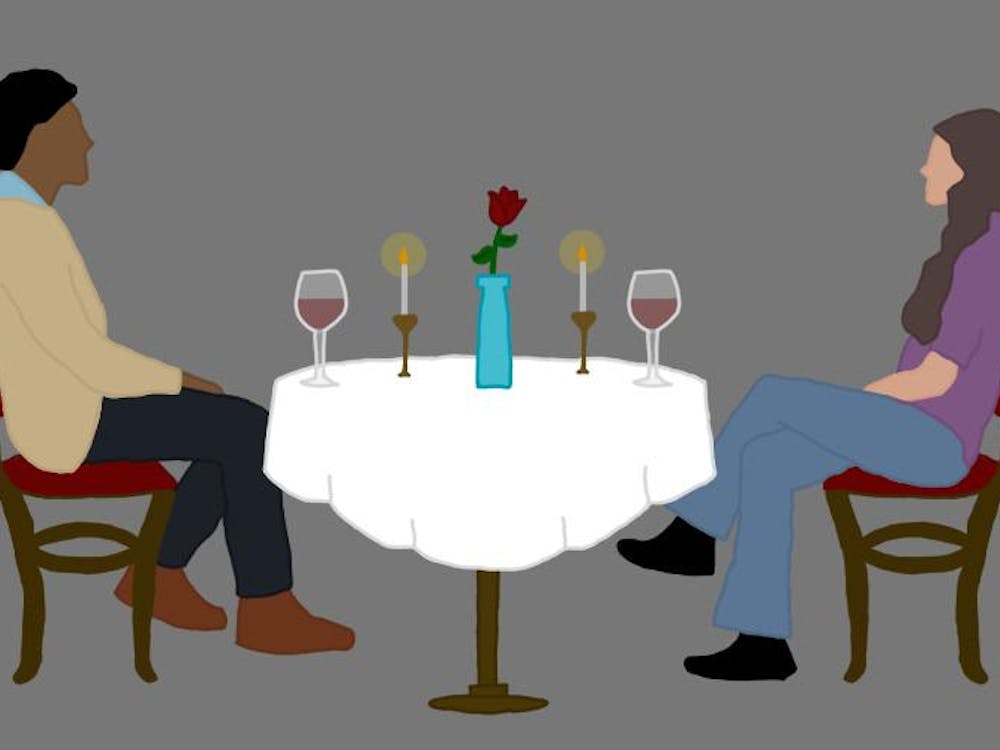The Lawn application for the 2009-10 academic year was released Monday, and some of the University’s best and brightest third-year students are preparing to be considered for the prestigious residences.
Any third-year student can now access the application, which is designed to determine which applicants stand out for their “unselfish service to the University and achievement in their respective fields of activity and academics,” according to the University Housing Division Web site.
As fourth-year College student Christian West, senior resident of the Lawn, explained, the application consists of five to six questions, asking not just about a prospective resident’s past contributions to the University but also about how he or she will continue to contribute to the community. At Monday’s application orientation meeting, fourth-year Architecture student Napatra Charassuvichakanich, a Lawn resident, said applicants should stress how they will make the Lawn a “diverse, welcoming place” and should use concrete examples in their application.
While a Lawn room is one of the University’s highest honors, one current Lawn resident criticized the process by which rooms are awarded. The method by which applicants are picked has suffered from a lack of transparency in the past, fourth-year College student Vadim Elenev said. The criteria used by the selection committee to select residents traditionally are not released officially, he said, but inevitably some applicants “know people on the selection committee, and are more ‘plugged in,’ ... and end up knowing more about it,” giving them an advantage.
Some students do seek out help from current residents. Lawn resident Bowman Dickson, a former Cavalier Daily Production editor, said he took advantage of Lawn residents’ knowledge when he was applying. “I got some good advice from older fourth-year [students] who helped me out,” he said.
Some other current Lawn residents, meanwhile, preferred to tackle the application without outside advice, including fourth-year Commerce student Bryan Myers, who said he has known past Lawn residents through organizations he is involved with on Grounds but did not seek advice from them regarding the Lawn application’s content.
“I felt like the best application, as cliché as this sounds, would come from the heart ... I didn’t want to find out what other people thought I should write about,” he explained.
Though Elenev pointed out problems surrounding a lack of transparency in the application process, he noted that this year’s application committee has been more open about the process.
The Lawn Selection Committee, West said, consists of 37 members, 21 of whom are ex-officio, meaning they are representatives of other University organizations. The other members, aside from West, are “pulled from fourth-year [students] that put their names into a lottery and [are] randomly selected to be on the committee,” he added. In this way, West said, the Lawn Selection Committee hopes to be representative of the University as a whole.
After the Jan. 9 application deadline, West will meet with the committee members to train them, he said. Committee members do not see personal identification information about the applicants — just their application and transcript. After two weeks, each committee member selects the 47 residents he or she feels are best qualified to live on the Lawn, West added. The votes of the whole committee are then tallied, and a list of new Lawn residents and alternates is drawn up.
Lawn hopefuls do not find out their acceptance status until February; this year, the date is Feb. 6. Elenev said he feels this late date discourages qualified students from applying. The timing “doesn’t match up with any other housing,” he said. If you’re an alternate, the announcement can take even longer — Elenev, for instance, did not find out he had been accepted until March. “Alternates I can understand, but as far as initial decisions, there’s no reason to wait until February,” he added.
Some students agree with Elenev. Third-year College student Molly Schmalzbach, who plans to fill out this year’s application, said she plans to “play it safe.” She intends to sign a lease this weekend, despite her Lawn aspirations.
“I’ve always known I wanted to live on the Lawn, but ... I know I can’t wait until Feb. 6 to find somewhere to live,” she said. “At U.Va., you feel pressured to sign before Christmas at the latest.”
Myers agreed. He described the wait leading up to the announcement as “nerve-wracking.” When he found out he had been accepted, he began the process of finding someone to take his place in the lease he had already signed. The hunt only took him two weeks, but he added that for a new Lawn resident, “it seems like an eternity. You’re thinking, ‘Oh my gosh, I’m going to be stuck paying two rents.’”
Dickson said he did not sign a lease while waiting to hear the news but felt that he still had a back-up plan.
“I knew so many people applying to the Lawn that I felt pretty confident that if I didn’t get a spot, I could pull something together with other people” in the same situation, he said. He added that he knows people who had made alternative arrangements and had trouble getting out of their leases.
West noted that most students he has talked to made informal plans to live with friends without signing a lease. West added that students have another option of applying for on-Grounds housing; students who are selected to live on the Lawn would then have their previous contracts with University Housing nullified.
Myers said students should not assume they will be awarded a Lawn room.
“I don’t think anyone should feel that they’re in a position to be guaranteed a room on the Lawn,” he said, adding that would be tantamount to “taking the Lawn for granted.”
Elenev, too, stressed preparedness. Even if students sign leases before the announcement, “landlords may be a lot more flexible if you talk to them early than their paperwork would suggest.”
Also important, Elenev noted, is that students keep in contact with the roommates they planned to live with.
“Make sure they know what’s going on; don’t leave them screwed in the end,” he advised.
West stressed that the Lawn community is aware of the tension that the late announcement causes for prospective residents. Last year’s announcement date was even later, he said, well into February. He said, though, that the lengthy application process is actually a boon for many students.
“We want to give students an opportunity to have their grades from first semester of their third year included in their transcript,” he noted. If the application timetable were pushed back much earlier, those grades, as well as any extracurricular activities undertaken in the applicant’s third year, would not be considered, he explained.
Despite the difficulty of the application process, the experience of living in a Lawn room is not soon forgotten — at the Monday meeting, current Lawn residents noted that the occasional alumnus will knock a current resident’s door to let that student know he lived there 30 years ago. Even with the drawbacks, many past residents and current hopeful Lawn residents would probably consider the problem of resolving housing issues to be a happy one.






